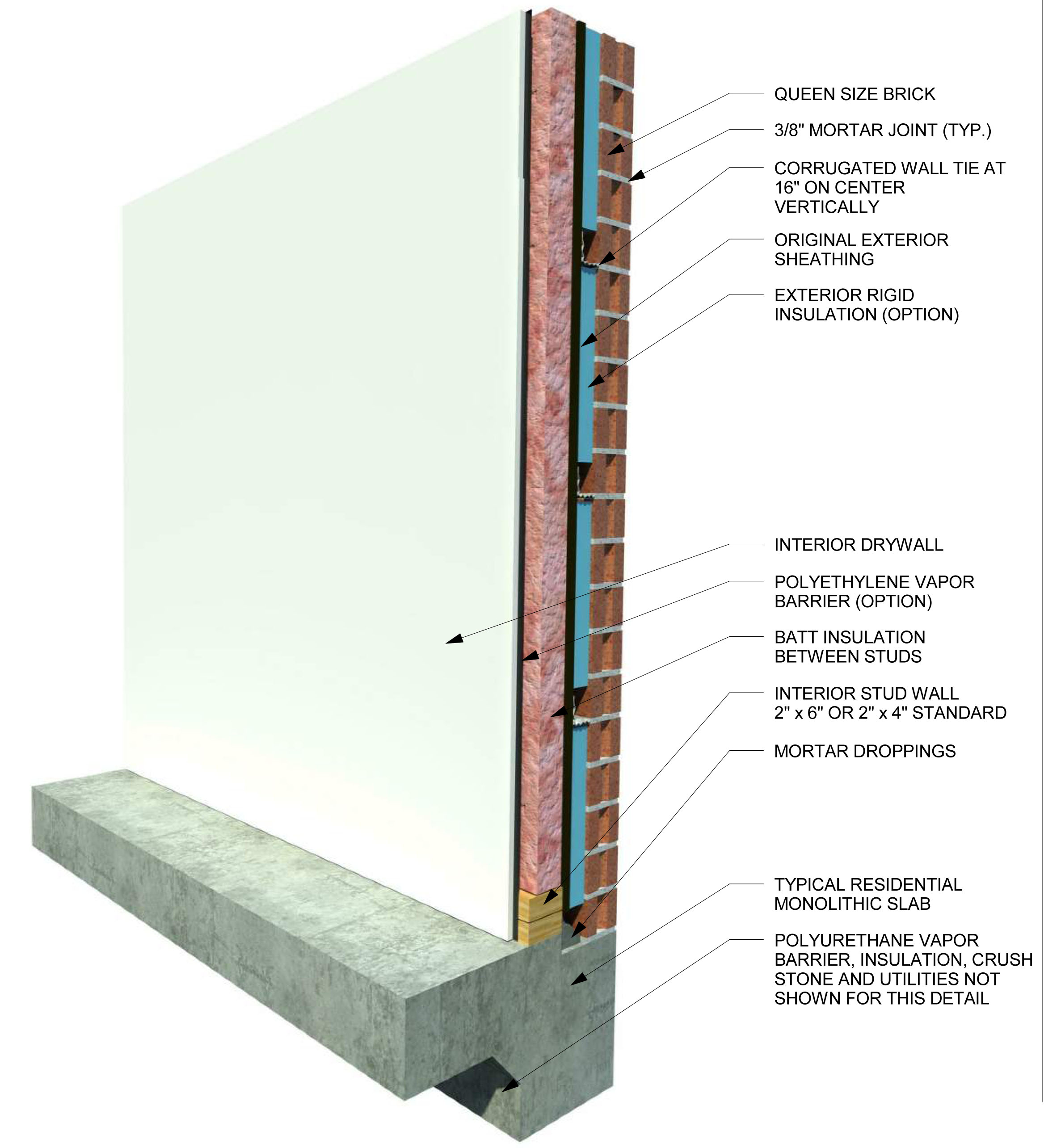WallNet-F™ | A Flood Damage Repair Solution for Brick Veneer Structures
Fast, Secure, Simple, Cost Effective Flood Damage Repair
Hurricane Harvey in late August 2017 created the third 500 year flood in three years in Houston and along the Gulf Coast. The flood resulted in tragic loss of life, economic damage was in the billions with damage and destruction to residencies in the tens of thousands. Once the water drained homes were left with the obvious effect of water damage and the pending destruction of mold.
As the repairs began, Mortar Net Solutions applied its knowledge and experience in moisture management for masonry structures to develop an approach to remediate flood damage to the thousands of damaged brick veneer walls.
WallNet-F is the resulting solution in this 10 step remediation process. During demolition and reconstruction using this plan, the masonry wall remains in place, thus saving the cost of removing and replacing brick veneer and providing continuing security of the structure from weather, vandalism and theft.
The detail to the right shows the interior of the wall after demolition below the water line and installation of the new WallNet-F polypropylene mesh with attached geotextile fabric. This product will allow for future drainage and ventilation along with preventing closed cell spray foam insulation from blocking the cavity.
Original Typical Residential Construction 1950’s – 2000
The detail to the right is a section showing the wall design typical of brick veneer homes.
This detail assumes the ground floor is on a concrete slab that was undamaged by flood waters. Most homes have insulation only between studs with no exterior rigid foam insulation. Those built more recently may have rigid foam attached to the exterior face of the studs. Also, in some cases there may be a space (typically 1”) between the interior face of the brick and sheathing (typically OSB or plywood).
Demolition
The first step in remediation is demolition to remove interior wall board, batt insulation between studs, exterior insulation (if present) and exterior sheathing up at least up to the flood water line.
Homes may differ, but generally, this section shows the condition after removal of materials.
Evaluation of Brick Anchors
After removal of all materials, the integrity of the brick anchors should be evaluated. If they are loose or otherwise compromised new brick anchors should be installed at approximately the same location as the weakened anchors. Anchors attached to studs by nails are prone to loosening due to expansion of wood while wet, then shrinkage as it dried. Construction Tie Products provides a helical brick anchor that is installed from the interior as shown.
Reconstruction
Following demolition, the remediation components are installed. Here is a section shown after installation (before drywall replacement).
The function of each component is:
- Liquid flashing (FastFlash® by PROSOCO) is installed to protect the sill brick ledge, while providing a drainage path for water that penetrates the brick veneer in subsequent rain events.
- Mortar Net Solutions WallNet-F™ is a 1” thick by 16” wide x 5’ length entangled polypropylene mesh product with a geotextile fabric attached. The mesh and fabric are air, vapor, and water permeable to promote drainage and ventilation to dry the 1” cavity created by the entangled mesh. The fabric serves as a barrier to the penetration of spray foam insulation installed later. The WallNet-F is installed in 16” wide vertical strips from the base of the wall up to the top of the materials removed during demolition. Cuts in the WallNet-F define tabs. These tabs are folded outward and affixed to the face of the studs, typically with staples.
- 2 ½” of closed cell foam (BASF Spraytite®, for example) is sprayed into the space between studs. In addition to providing an insulation value of about R16.5 and serve as a Class II vapor retarder with permeance less than 1 perm. Also, the foam will encapsulate the wall ties and provide additional strength to the assembly. The integrity of the wall ties will need to be evaluated as the expansion and contraction resulting from water absorption and drying may loosen fasteners.
- Construction Tie Products helical anchors, if used, are designed to be installed from the interior to re-anchor any area of the brick veneer wall with anchors.
- Mortar is removed from head joints approximately each 24” by drilling 3/8” diameter holes in the head joint and using a chisel to remove remaining mortar. After opening, WeepVent™ by Mortar Net Solutions installed in the joints. The WeepVent provide a continuous drainage and ventilation path from the exterior to the cavity.
This solution was engineered to provide an effective, low cost solution to remediating damage to brick veneer walls, while also adding important drainage and ventilation features that today are standard practice to provide high performance cavity walls.
After completion of the above steps, drywall is reinstalled and the finish applied to restore the home to its original condition.





